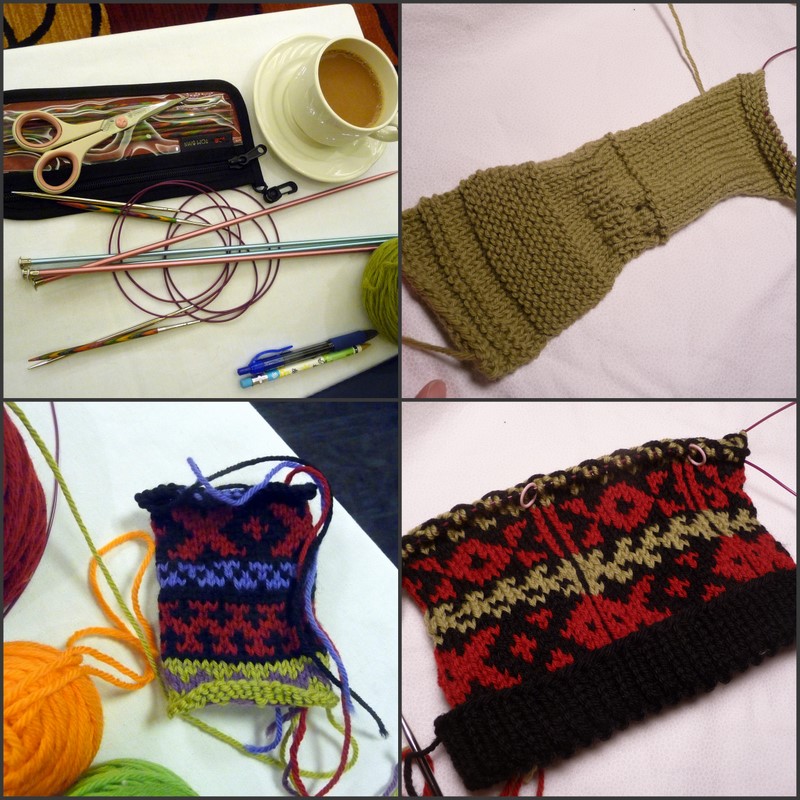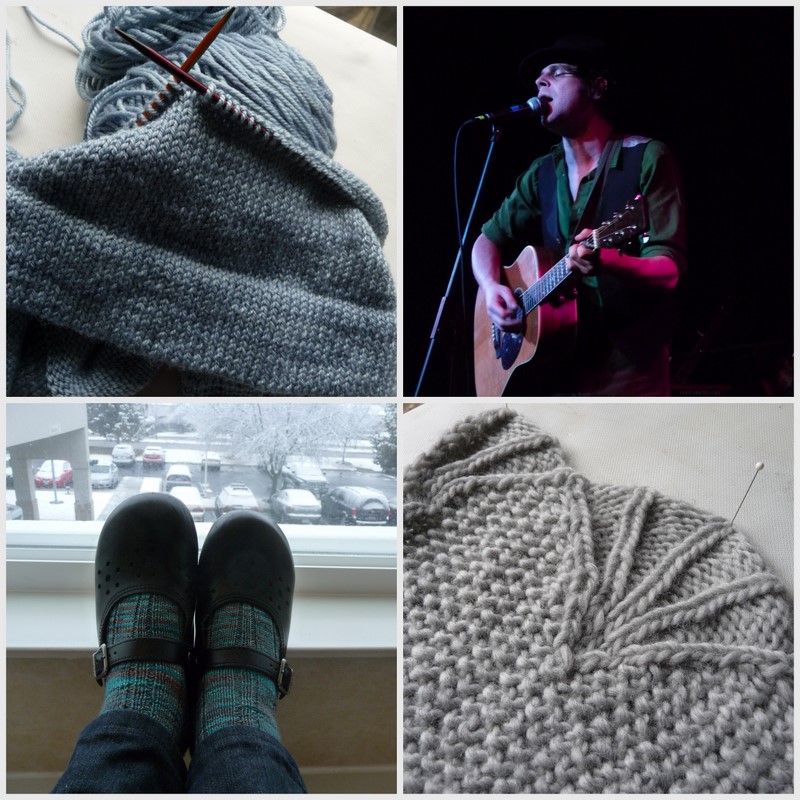After Janine's class, I had a "day off" from Madrona, which really means a regular day at work. A regular day after being gone part of the day Tues / Wed for the Wilco shows, and Thursday for Madrona. In other words, a really, really busy day, capped by an evening of annoyance at NBC for tape-delaying the Olympics' opening ceremony.
Day 2: Speed Knitting with Stephanie Pearl McPhee
Fortunately, my next class wasn't until Saturday afternoon--Stephanie Pearl McPhee's Knitting for Speed and Efficiency. The top two photos show my desk area (including long, scary needles), and my finished swatch. The technique that she taught is called "lever knitting", where one needle is kept stationary. I could not believe how tight (and pretty uniform) my knitting was, using the recommended tensioning of yarn through several fingers--I'd sort of expected that this new technique would result in some sloppy stitches. It took some time to get the hang of it, but even after a just a few hours, I can see that some benefits--having better tension control, for starters. I just need to practice a lot more. A LOT more. Stephanie recommeded starting a new Lever-only project, and working on it steadily for about 30 days with long-ass needles. She showed us breifly how to adapt to other needles, but said (and this totally makes sense) that it's best to get comfortable with the technique as taught before going all freestyle. Note that I'm almost certainly not quoting here here, but that's the gist of it. I will probably wait until after the Olympics (or after I finish my two major Ravelympics projects), and the project will probably be a seed stitch or ribbed scarf. Equal knitting and purling, and lots of switching between = good practice!
Day 3: The Magic of Komi Knitting with Charlene Schurch
On Sunday, I was in Charlene Schurch's Komi knitting patterns class. The bottom row of photos above show my morning swatch, and my afternoon hat. This class was really cool, and it reminded me a lot of a lecture I went to at Sock Summit about Turkish knitting designs. I did not take good notes in either class (too busy swatching!), but I think that Charlene said that the Komi people are in the same language group as Turkish people, and Hungarians. The Komi Republic is in the far north of Russia, and if you're interested there's some possibly correct info available on Wikipedia. While the patterns of the Komi region were the jumping off point of the class, the emphasis was not so much on the exact way that these patterns were used by knitters in the region, or what cast-on a traditional Komi knitter might prefer, or what thumb is most historically accurate. The focus was more on the patterns themselves, and how they use simple, memorable stitch repeats to form very complicated looking items. I highly recommend Charlene's book Mostly Mittens, which uses the Komi patterns in gorgeous mittens--the samples she brought along were soooooooo beautiful!
In my swatch, I tried out several patterns with a few different colors, and decided to knit my Komi Hat with red, black, and a dull-ish light green. The hat pattern is sized for a child, but I think that at my gauge, it's probably going to fit a small adult head (or large child). I like the color combination, but wouldn't choose it if this was a hat for me, but once it's finished I'm sure I will find someone who can use it. In any case, this is my only new Ravelympics project--it's good motivation, since I have a poor track record of finishing class projects. But more about the Ravelympics will have to wait for another post, I think . . .











